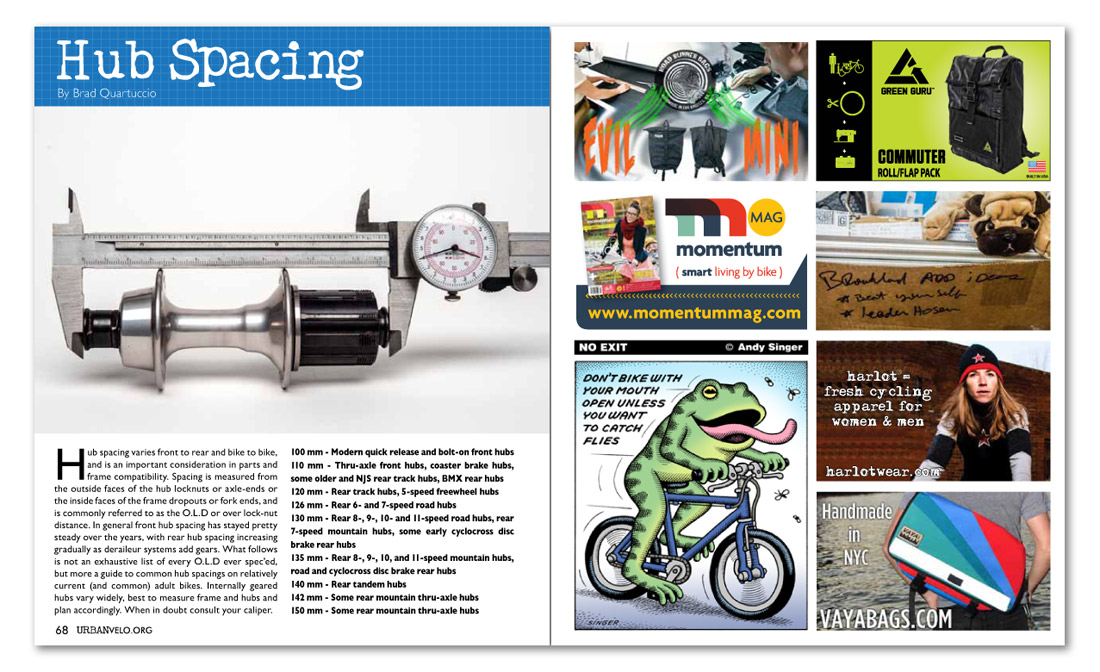


Hub Spacing
Brad Quartuccio
Hub spacing varies front to rear and bike to bike, and is an important consideration in parts and frame compatibility. Spacing is measured from the outside faces of the hub locknuts or axle-ends or the inside faces of the frame dropouts or fork ends, and is commonly referred to as the O.L.D or over lock-nut distance. In general front hub spacing has stayed pretty steady over the years, with rear hub spacing increasing gradually as deraileur systems add gears. What follows is not an exhaustive list of every O.L.D ever spec’ed, but more a guide to common hub spacings on relatively current (and common) adult bikes. Internally geared hubs vary widely, best to measure frame and hubs and plan accordingly. When in doubt consult your caliper.
100 mm - Modern quick release and bolt-on front hubs
110 mm - Thru-axle front hubs, coaster brake hubs, some older and NJS rear track hubs, BMX rear hubs
120 mm - Rear track hubs, 5-speed freewheel hubs
126 mm - Rear 6- and 7-speed road hubs
130 mm - Rear 8-, 9-, 10- and 11-speed road hubs, rear 7-speed mountain hubs, some early cyclocross disc brake rear hubs
135 mm - Rear 8-, 9-, 10, and 11-speed mountain hubs, road and cyclocross disc brake rear hubs
140 mm - Rear tandem hubs
142 mm - Some rear mountain thru-axle hubs
150 mm - Some rear mountain thru-axle hubs
Vaya
Green Guru
Harlot
Broakland
Road Runner